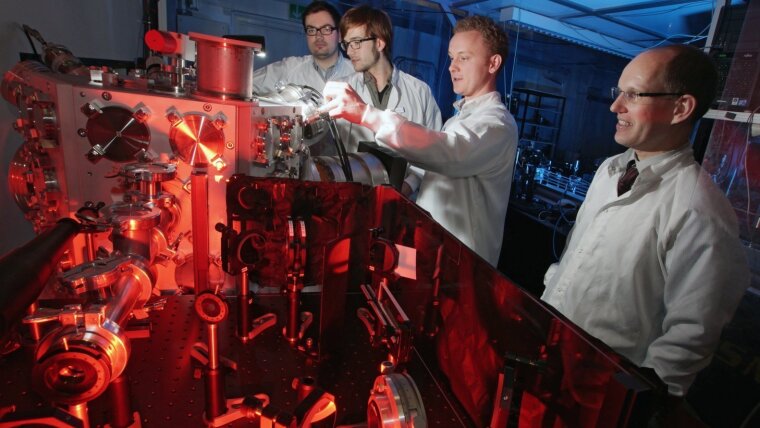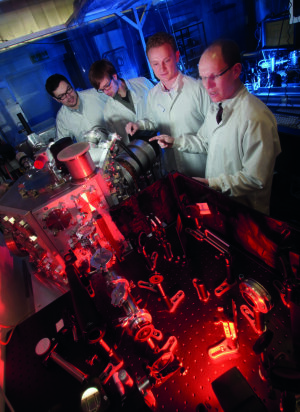
Prof. Dr. Gerhard Paulus
Image: Jan-Peter Kasper (University of Jena)Prof. Dr. Gerhard G. PAULUS
Email: ggpaulus@ioq.uni-jena.de
Phone: +49 3641-9-47200
Dr. Paulus holds the Chair of Nonlinear Optics. In addition, he is a member of the board of directors of the Helmholtz Institute Jena and serves on several scientific advisory committees at major laser facilities all over Europe.
Research Areas
The central theme of Dr. Paulus’s research is strong-field and attosecond laser physics. Current projects include:
- Phase-dependent ionization and dissociation of fundamentally important atomic and molecular systems
- Relativistic ionization dynamics
- Strong-field QED
- X-ray polarimetry with an extinction ratio of 1010
- Nanoscale XUV imaging
- High-precision X-ray polarimetry
Teaching Fields
- Introductory physics
- Fundamentals of modern optics
- Nonlinear optics
- Strong-field and attosecond laser physics
- X-ray physics and free-electron lasers
- Renewable energies
Research Methods
- Photoelectron spectroscopy
- Momentum spectroscopy
- XUV spectroscopy
- Polarimetry
- Vortex laser beams
Prof. Gerhard Paulus with this team.
Image: Jan-Peter Kasper (University of Jena)Recent Research Results
Dr. Paulus’ research group has invented and developed XUV Coherence Tomography (XCT) as a novel method for non-destructive cross-sectional imaging with nanoscale resolution. Similar to Optical Coherence Tomography (OCT), the scheme is based on white-light interferometry, however using ultra-broadband extreme UV radiation. In addition to high resolution, the method affords very high material contrast and ultrafast temporal resolution.
The XUV radiation used for XCT is generated via high-harmonic generation, i.e. via the interaction of intense femtosecond pulses with atoms or molecules. Dr. Paulus uses an unique approach to investigate the fundamental physics of the respective processes, namely a fast ion beam of fundamentally important systems such as He+, H2+, or HeH+. The latter is in fact considered to be the first molecule after the Big Bang. We have performed the first measurements on the strong-field dissociation and ionization dynamics of this intriguing molecule.
Last but not least the group works on high-precision X-ray polarimetry. The ultimate goal is to measure the birefringence of vacuum polarized by a strong laser field. To this end, an X-ray polarimeter with an extinction ratio of 10-11 or better is required. In the past ten years, a series of world records in polarization purity were established and the state-of-the-art advanced by three orders of magnitude such that the required extinction ratio is in reach. The unprecetended sensitivity of the polarimeters has found applications for a number of other applications in plasma physics, solid-state physics, and X-ray quantum optics.
[1] Fuchs et al., Optica 4, 903 (2017).
[2] Wustelt et al., Phys. Rev. Lett. 121, 073203 (2018).
[3] Zhang et al., Phys. Rev. Lett. 124, 133202 (2020).
[4] Bernhardt et al., Appl. Phys. Lett. 109, 121106 (2016).

